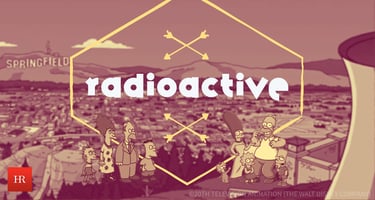How is it possible that The Simpsons is about to start Season 35? I remember when it first began as...
Made You Look: Talent Attraction at Its Finest
.jpeg?width=800&height=427&name=Humareso%20Blog%20Posts-1-Made%20You%20Look%20(1).jpeg)
Talent attraction is ambiguous. There are a series of questions that might help us to define a path towards it. What will it take to get a candidate to be drawn to what our organization has to offer? Is it compensation? Benefits? Mobility or flexibility? Advancement? Is it all this and more? So, how do you know what to focus on?
When Ross decided it was time for him to change his approach to dating (to be more attractive, to break out of his routine/brand), he purchased a pair of leather pants for a date. It is one of the more hilarious episodes of Friends as Ross experiences the discomfort in fit, temperature and flexibility in those pants while on that date. What started out as a stance on being different, relevant, attractive and engaging turned into awkwardness, discomfort, unattractiveness and failing to get him a second date.
Is your company trying to put on “leather pants” to attract talent? Sigh.
Ask your teams about the brand. Start with what you have access to – those who have aligned themselves to the organization. At a basic level, there is some attraction for that employee to be part of the company. Whether “it’s just a paycheck” or up to “I love it here,” there is feedback to start with in nailing down a talent attraction approach. Ask them what it would take to have someone take a second look at our company. Ask them why they did. Use that information to provide foundational components to the attraction strategy.
Leaving it to the executive team alone to determine why someone would want to be part of the organization is a flat, biased plan forward. If they are alone to reinvent the talent attraction and brand alignment approach, they often believe they have their fingers on the pulse. A recent PwC survey of executives revealed that 76% of them “agree that they have the capabilities to execute business model changes at scale.” Now, think about that from an employee’s perspective. When they see physical plant issues (a toilet that’s been leaking for weeks, for instance) or organizational structure needs (job leveling, leadership approaches, compensation analytics, etc.) that have not been addressed, it causes doubt regarding the “capabilities” available to execute. Executives might think more highly of themselves than they ought.
The language around culture is also a limited approach. It is highly unlikely that a company would advertise: “Come join us. We have a mediocre culture and we’re barely getting by” (I don’t suggest this approach). Instead, we see an uninspiring tale of vibrant culture and inclusive opportunities. These messages become noise and lost in the sea of others saying the same. And further, incumbent employees see this and, if it isn’t quite true, double down on the liars that run the organization. That’s not the messaging that you want.
Talent attraction is a mix of cultural truths and brand management, yes, but it is also organizational opportunities, market penetration tactics, competency development and total rewards offerings. It is all of it which provides many messaging opportunities for talent acquisition, human resources and marketing teams to collaborate and to deliver.
Think about the messaging. What does it tell others about the organization? Hear it from the vantage point of someone who does not know anything or much about the company. Use friends and family at times to provide feedback on their impressions based on the messaging. And don’t be defensive about it! You want to hear those responses.
Lastly, stay authentic to what the company really is. Overpromising is a death sentence. Employees will share with a new employee, usually within the first week, as to what the truths are. The leather pants are not a lasting strategy. Take them off (er, wait a minute, that’s not what I meant).




Blog comments